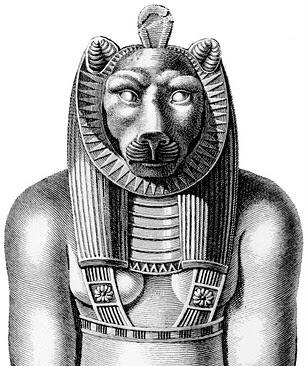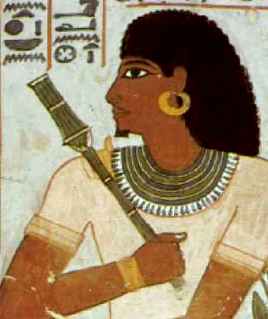Sekhmet in Egyptian Mythology - The War Goddess
Sekhmet, the Egyptian sun goddess of war, featured in the stories, myths and legends in Egyptian Mythology. Depicted with the head of a lioness she was revered as the "Powerful One", a protector of the Pharaohs and the armies of Egypt and like the cobra, was known for fighting, rather than retreating. Sekhmet was the fierce warrior goddess of divine retribution, vengeance, destruction and conquest. Her sun disk crown is depicted with the Uraeus rearing cobra that symbolized the absolute power and authority of the gods and the Egyptian monarchy. She was a warrior manifestation of the sun, causing flames to devour the enemies of Egypt. In some of the cities in ancient Egypt the gates of the temples dedicated to Sekhmet were opened as a signal of the start of a military campaign. As a lioness she represented the fiercest hunter known to the ancient Egyptians. 
Picture of Sekmet Sekhmet in Egyptian Mythology - Pestilence, Plague and Physicians
Sekhmet was greatly feared not only as the warrior goddess of destruction but also because she was believed to be the bearer of plague and pestilence, which she could deliver to the enemies of Egypt. She was the goddess who was called upon in spells, incantations and amulets to ward off disease. Her priests were physicians, surgeons and magicians who were consulted by the royal families for cures of illness and disease. Symbols of Sekhmet - The Sekhan Scepter
The other symbols associated with Sekhmet were the Ankh that represented eternal life and the symbol of her power to give life or take it away. Her other symbol was the ritual Sekhem scepter of power indicated by the following hieroglyphic: 
The Sekhem scepter was often incorporated in names and words associated with power such as the king's name or the name of gods such as Sekhmet, the lioness-goddess. 
Picture of the Pharaoh Sennifer holding a Sekhem scepter Sekhmet and Tefnut - The Lioness Goddesses
Many of their ancient gods were subsumed (meaning absorbed) into new gods and goddesses. The practice of creating new deities by combining them with old gods is called 'syncretism', meaning the fusion of religious beliefs and practices to form a new system. This was the case with Tefnut and Sekhmet. Tefnut was the lion-headed goddess of Heliopolis. When Memphis became the new capital of Egypt its leaders and priests justified its status by developing a new creation myth with Ptah taking the dominant role. In time Tefnut was subsumed (meaning absorbed) into a new goddess - Sekhmet who was raised to the high status and position of the wife of Ptah. Sekhmet and the Triad of Memphis
The creation myth was devised by the priests of Memphis focussing on Ptah, his consort Sekhmet had a son called Nefertum. The three gods became collectively known as the Memphis triad which centred around the cult of the god Ptah, the lioness goddess Sekhmet and Nefertem. The Triad of Memphis was the Lower Egyptian (north) counterpart of the Triad of Thebes (Amun, Mut and Khonsu) and superseded the gods and goddesses of the Ennead of Heliopolis and the Ogdoad of Hermopolis. Sekhmet, Bastet and Ra
She also became an amalgamated deity with the Feline goddess Bastet and closely aligned to the Sun God Ra. with the sun god Ra and called Sekhmet-Bast-Ra. The cat goddess Bastet was said to typify the mild, gentle heat of the sun whereas Sekhmet typified the vicious heat of the burning rays of the sun. Sekhmet is absorbed with the goddess Mut
As Thebes rose to greater prominence in ancient Egypt, and the triad of gods became a powerful political and religious force, the Goddess Mut absorbed aspects of other goddesses and was merged with Wadjet, Bastet, Menhit and Sekhmet, who were all warrior lioness goddesses. The power of Sekhmet was at lasted abated - she was completely merged with Mut. |